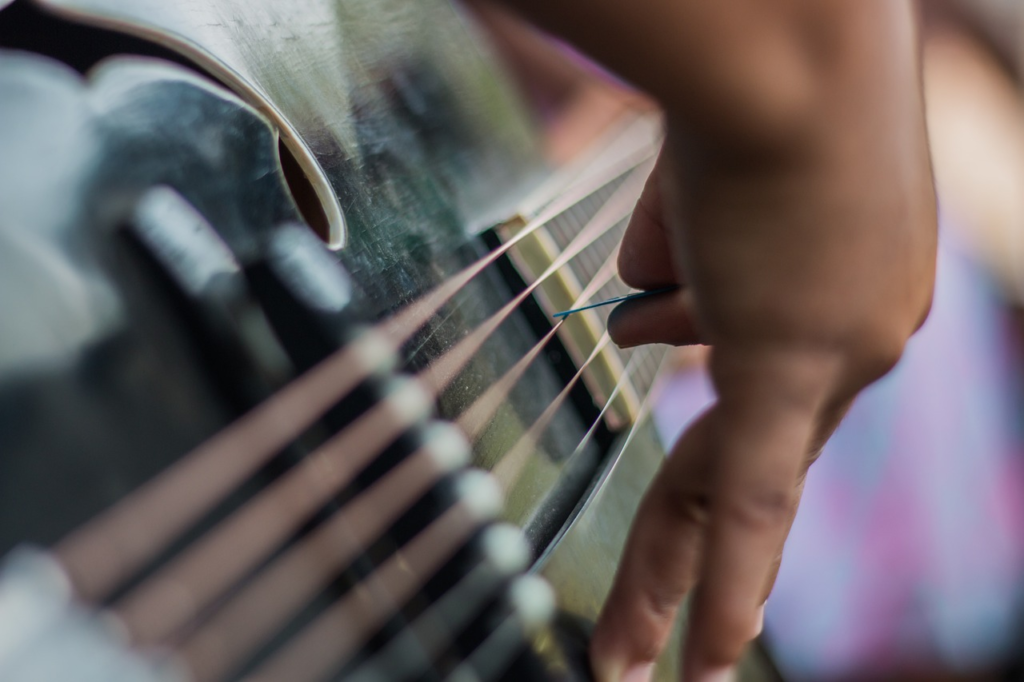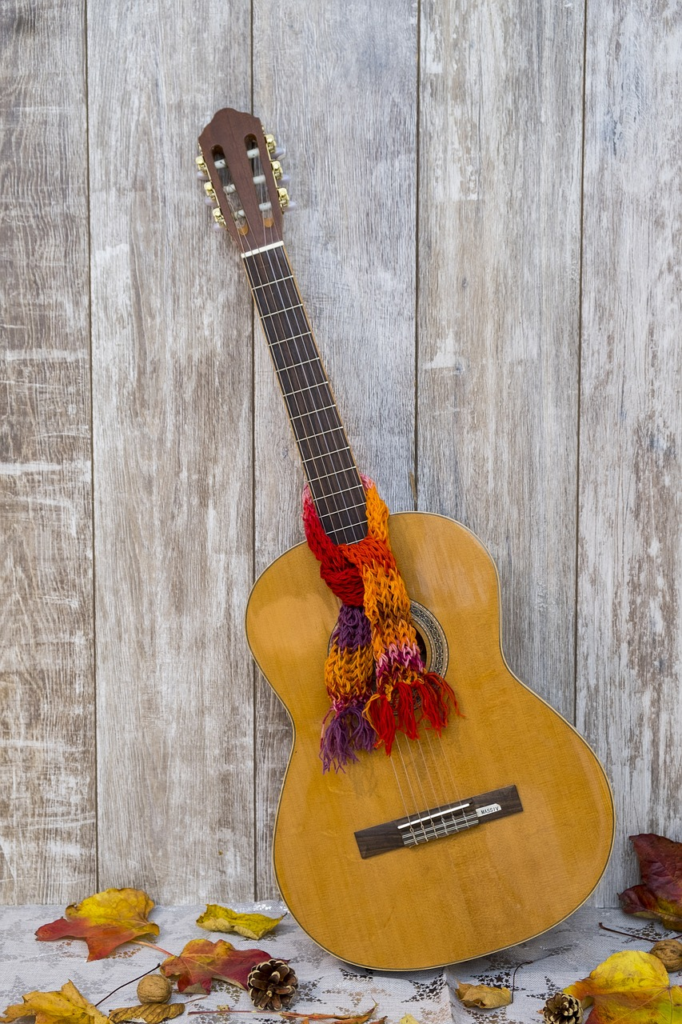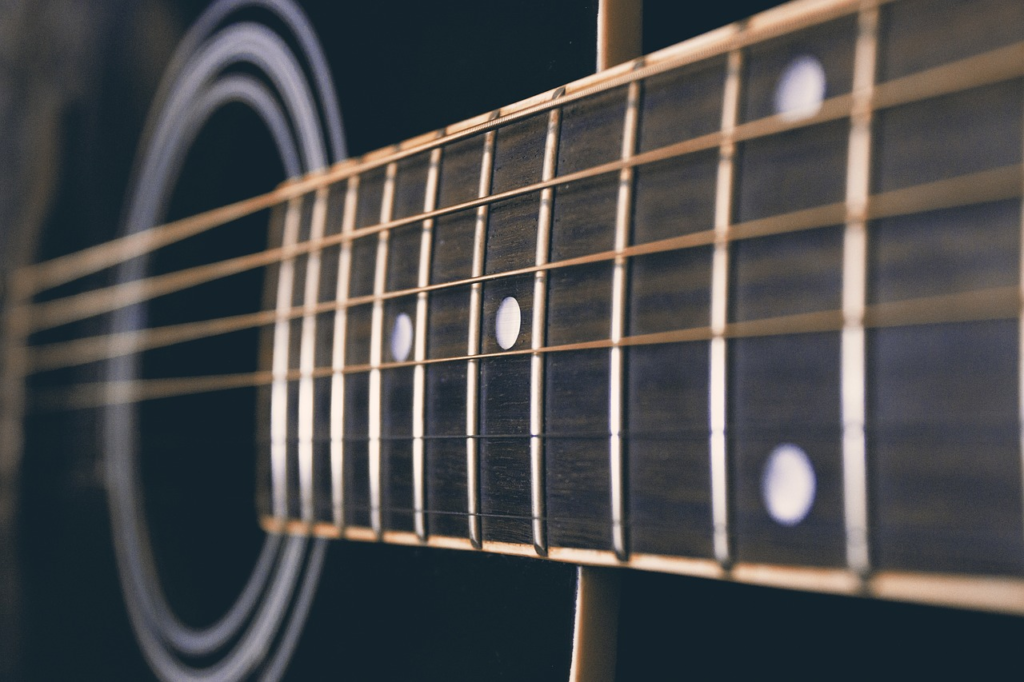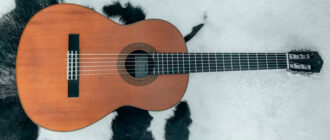
Welcome back , fellow guitar enthusiasts! If you’re fed up with those pesky sharp fret ends disrupting your playing bliss, and you’re on a mission to level your guitar’s frets, you’re in the right spot. In this comprehensive guide, we’ll explore the essential steps on ‘How to File Frets on a Guitar,’ ensuring a more comfortable and enjoyable playing experience. Whether your guitar is brand new or well-loved, let’s dive into the process of smoothing those frets for optimal performance.
Table of Contents
Can Guitar Frets be Filed Down?

Image by tortugamediaservices from pixabay
Absolutely! Filing down dry guitar frets is a common practice among guitarists to eliminate those pesky sharp fret ends that expose you to discomfort. By carefully reshaping and smoothing the frets, you can improve playability and eliminate any discomfort caused by the sharp edge. Nobody wants their instrument to be uncomfortable to play.
Can I File Frets with Sandpaper?
While sand paper or steel wool may seem like a convenient option, it’s not the most effective tool to crown the frets. Fret bevel files are specially designed for this task, featuring surfaces coated in diamond that provide precise polish and consistent results for the edge of the fretboard. Using sandpaper on sharp frets can lead to uneven frets, leave a mark on the instrument and may not give you the desired outcome. Using a belt sander is equally dangerous. Consider Micro-Mesh as a surface finishing product.
How to File Frets on a Guitar:
1. Prepping Your Guitar:
Before you start filing, it’s important to ensure that your guitar is properly prepared. This includes loosening the strings, protecting the fingerboard with tape, and making sure the instrument is secured in a stable position. You may need to think about this step to keep it safe and make the edge of the board available for filing the frets.
2. Filing Down the Frets:
Using a fret file, gently and evenly file the sharp fret ends at a 45-degree angle. Be sure to maintain a smooth and consistent grip and motion to avoid any unevenness. Take your time and make small adjustments until the frets are flush, which will make even a cheap guitar much better.
3. Finishing Touches:
To ensure a professional finish, use a fret crowning file or a crowning razor to round the top of the frets. This step adds a slight curve to the frets’ edges, enhancing playability and preventing buzzing. Follow up with polishing using fine grit sandpaper or wipe with a fret polishing cloth for a smooth and shiny result.
How Do You Shave Down Your Frets?

Image by Bru-nO from pixabay
Shaving down your guitar frets involves removing excess material to achieve the desired height and shape. However, this is a task best left to professional luthiers or experienced DIY enthusiasts who specialize in that sort of thing. It is going to take the skill to drag specialized tools and expertise to avoid damaging the fretboard or compromising the guitar’s overall playability.
How Much Does It Cost to File Down Frets on a Guitar?
The cost of filing down frets on a guitar like the one you have at home can vary depending on several factors, such as the complexity of the job and the expertise of the luthier who will grind your frets down. On average, the price can range from $50 to $150, but it’s always best to consult with a trusted guitar technician or luthier (for example, Stew-Mac) to get an accurate estimate for your specific needs. They will inform you what type of crowning tool they will need to use (perhaps even needle files) to avoid an uneven fret.
What File to Use on Guitar Frets?
When it comes to filing guitar frets, using the right tool which works well is crucial. Fret files are specifically designed for this purpose, featuring diamond-coated surfaces that ensure precise and consistent fretwork. Take a look into investing in a quality fret file, such as those offered by renowned brands like StewMac or Nicholson, for optimal results. Trial and error are not acceptable here, because you might damage the instrument even if you are using a low-tack.
The Different Costs of Guitar Repairs and Improvements:

Image by Studio_Iris from pixabay
While fret filing is just one aspect of guitar maintenance, it’s essential to consider the overall costs of repairs and improvements. From fret leveling and dressing to setup adjustments and hardware upgrades, the expenses can add up. However, investing in your instrument’s playability and performance is always worthwhile, whether you have a custom shop Gibson or a budget-friendly guitar. But also, be careful not to damage or scrape your guitar, because it would be best to get experienced with a guitar that has never seen a repair shop.
Tips:
- If you’re uncertain about filing frets yourself and worry that you will reshape them wrongly, it’s best to seek the assistance of a professional luthier or guitar technician. You should want to take it to the best specialist, even if it is not cheap.
- Always work slowly and patiently, you need to take breaks to get the job done. Rushing the process may result in irreversible damage to your guitar due to an awkward stroke and poke. And the top of the fret is a very important part of the guitar, as well as the end of the fret.
- Protect the rest of your guitar’s body and fretboard with painter’s tape to avoid accidental scratching or scuffing while you are doing the fret work.
- Consider using a humidifier to maintain the ideal humidity level for your guitar. Low humidity can cause the fretboard to shrink, potentially exposing sharp edges. Don’t be afraid to humidify the air.
Warnings:
- Fret filing requires precision and care. Improper filing techniques can damage your guitar beyond repair. If you’re unsure about any step, consult an expert and use a professional fret leveling file.
- Always wear a mask or respirator when working with fret filings or polishing materials to protect yourself from fine dust particles while you are working on making the fret ends flush.
Congratulations! You’ve learned the ins and outs of filing frets on a guitar. By following the steps outlined in this guide and practicing caution, you’ll be able to transform your guitar’s fretboard from uncomfortable to a joy to play. Remember, take your time, be patient, pick a file to take time with the work, and don’t hesitate to seek help when needed. With a bit of effort, you’ll be rocking out with perfectly filed frets in no time!






